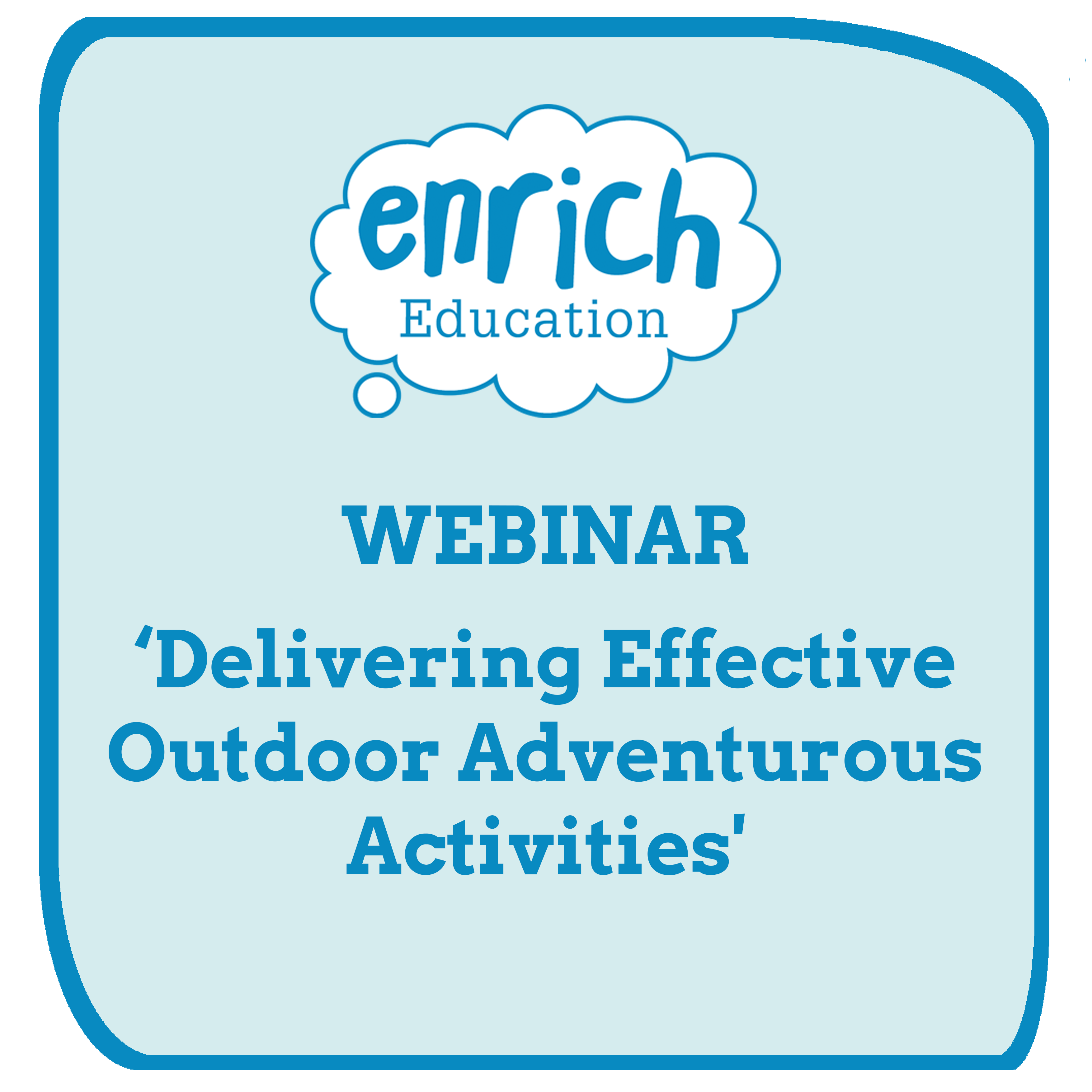Delivering Effective Outdoor Adventurous Activities’ Webinar
The webinar explored how school-based orienteering can be used to enable schools to deliver effective outdoor and adventurous activities (OAA) within the PE curriculum.
Each participant was introduced to a range of practical examples of school-based orienteering and received information about how they can introduce orienteering in their school. They were also be provided with a FREE ACTIVITY PACK that will enable them to try out orienteering with their class.
Access to the recording of the session and to download the Free Activity Pack at the bottom of this page
Outdoor Adventurous Activities (OAA) can be described as physical and intellectual challenges which involve problem-solving and teamwork and which take place in an outdoor setting. The National Curriculum PE programmes of study include OAA within KS2, KS3 and KS4. However, despite the many potential benefits that taking part in OAA offers to young people, it is an element of the PE curriculum which some schools find challenging to deliver.
In their recent PE subject report, ‘Levelling the Playing Field’, OfSTED found that, with regards to OAA, “many schools do not match the ambition of the national curriculum”. In 3/4 of a sample of fifty primary and secondary schools, OfSTED found that “outdoor adventurous activities (OAA) are either not taught effectively or not taught at all” and that in some schools, “staff lacked competence and confidence” to teach OAA.
Orienteering activities which take place within the school site can make a major contribution to addressing the challenge of delivering high-quality OAA experiences to pupils, from KS2 – KS4. Although orienteering is often associated with the ‘great outdoors’, school sites can be an excellent place to introduce young people to orienteering. The basic physical infrastructure needed is a bespoke orienteering map of the school site and a set of orienteering control markers, which are installed around the school site and shown as ‘control points’ on the orienteering map. An orienteering course is therefore very cost-effective – orienteering does not require any expensive equipment or facilities and is very sustainable once a course has been installed. To use orienteering to its full potential, the school map should include features of an OS map, including colours to denote different areas, gridlines, a key, and a scale. Control markers should be durable, and each marker needs to include a unique set of information, meaning that students will always have to physically visit a control marker to record a selected item of information.
In its simplest form, doing school-based orienteering involves pupils being given a course around the school site which consists of a number of control points that they must visit. They use their orienteering map to locate each of the control points – and to show that they have visited them, they record some specified piece of information from each control marker e.g. the 3rd letter or 2nd number if the markers include sequences of letters or numbers. An orienteering course may be short, consisting of e.g. 3 control points, which could be completed at a sprint, or a longer course, from 6 to 15 control points, which requires stamina and endurance to complete.
Even at its most basic level, orienteering involves communication, teamwork and problem-solving, as well as opportunities for sustained physical activity and competition. However, having an orienteering course installed opens up opportunities for delivering a huge variety of different OAA challenges within the school site. These include time trials, through which pupils can analyse and improve their performance, route planning, relays, and games such as ‘attack and defence’, where developing effective tactics and strategies is key to success. Schools can also use their orienteering course for a wide range of physically active lessons across the whole curriculum and to create opportunities for lunchtime and after-school clubs.
Orienteering is inclusive, creating opportunities for all pupils to participate and experience success, and can be successfully adapted to meet the needs of SEND pupils. It can also appeal to pupils who are difficult to engage in traditional school sports. Finally, it can be successfully delivered by both PE specialists and non-specialists, particularly if they are provided with quality activity plans and some initial training.
Enrich Education are the UK’s leading provider of orienteering products and services for schools, with over 10 years’ experience of working in partnership with schools throughout the UK. We are the International Orienteering Federation’s official education partner and our outdoor learning resources were the 2023 winners of the Education Resources Award for ‘Best Primary Resource or Equipment’.


